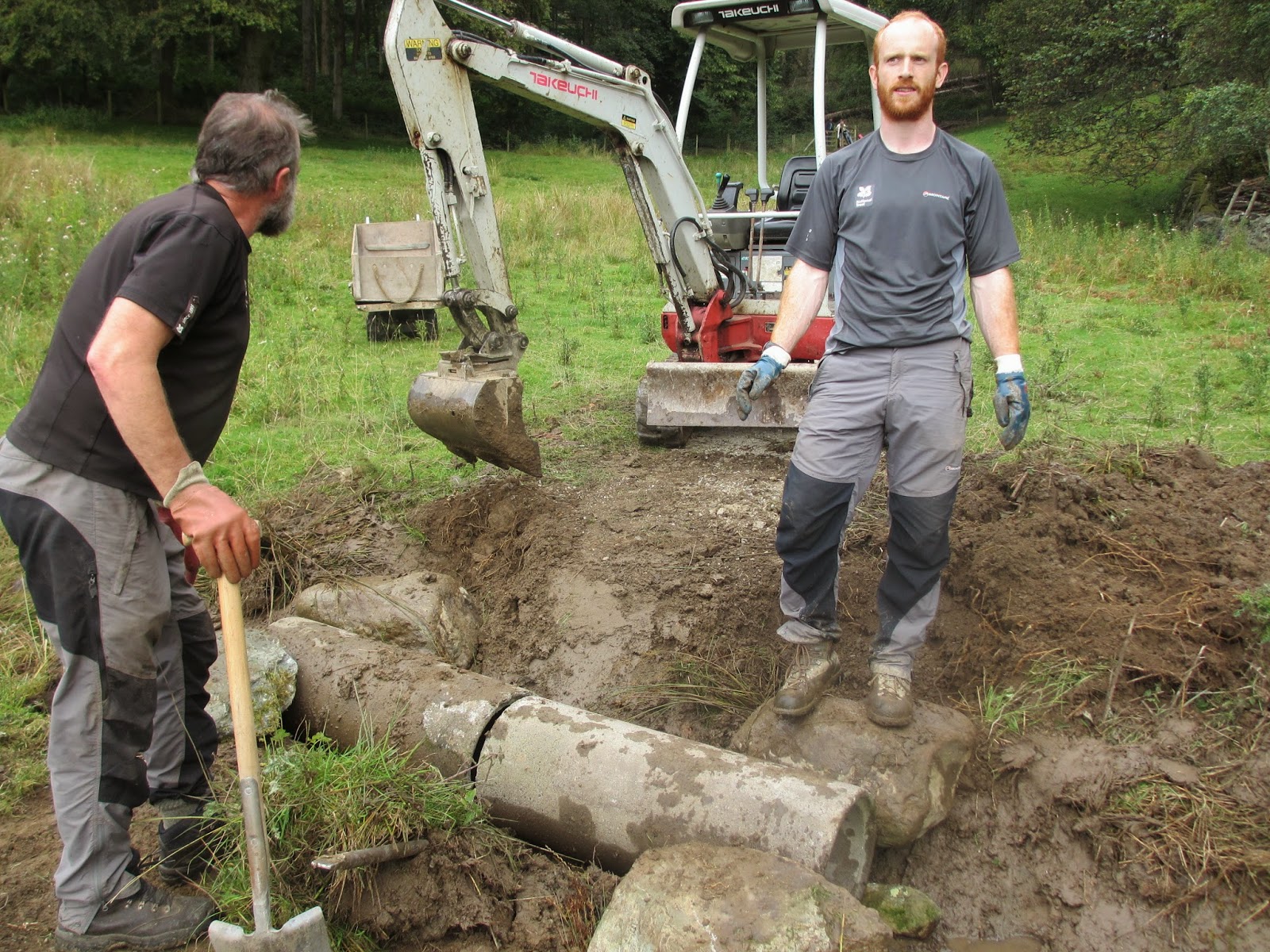On the 19th September various teams from local properties got together at High Close for a day of team building. As well as spending a morning helping speed along one of several footpath improvements the day was a chance to share ideas amongst colleagues, discuss projects and learn about each other's properties so that we can share this knowledge with our visitors.
The house and gardens at High Close date back to the mid-1800's when they were purchased by Edward Balme Wheatley-Balme, a Yorkshire merchant and philanthropist, and planted up with many rare trees and shrubs from all around the globe. The estate was left to the National Trust in 1953 and the house was leased to the Youth Hostel Association shortly afterwards. Much of the garden has been in disrepair for many years but recently a National Trust volunteer group has taken ownership of the garden and cleared back areas of rhododendron and unearthed much of the original path network.
The first job was to put a wooden edging to the sides of the pathway, ready for gravel to be put in at a later date. This involved measuring out the pathway at each point, using a mattock to level the ground and then digging posts into the ground to attach the wooden rails to.
Meanwhile, another team worked on invasive species control by uprooting and burning rhodedendron and cutting back the bramble to allow the area to be landscaped, in keeping with the history of the High close estate.
A great day was had by all, morale was kept high and some great ideas shared. High Close estate is always open to visitors and the YHA run a small cafe - look out for a blackboard on the road entrance for opening times. There is limited parking available free of charge.






































